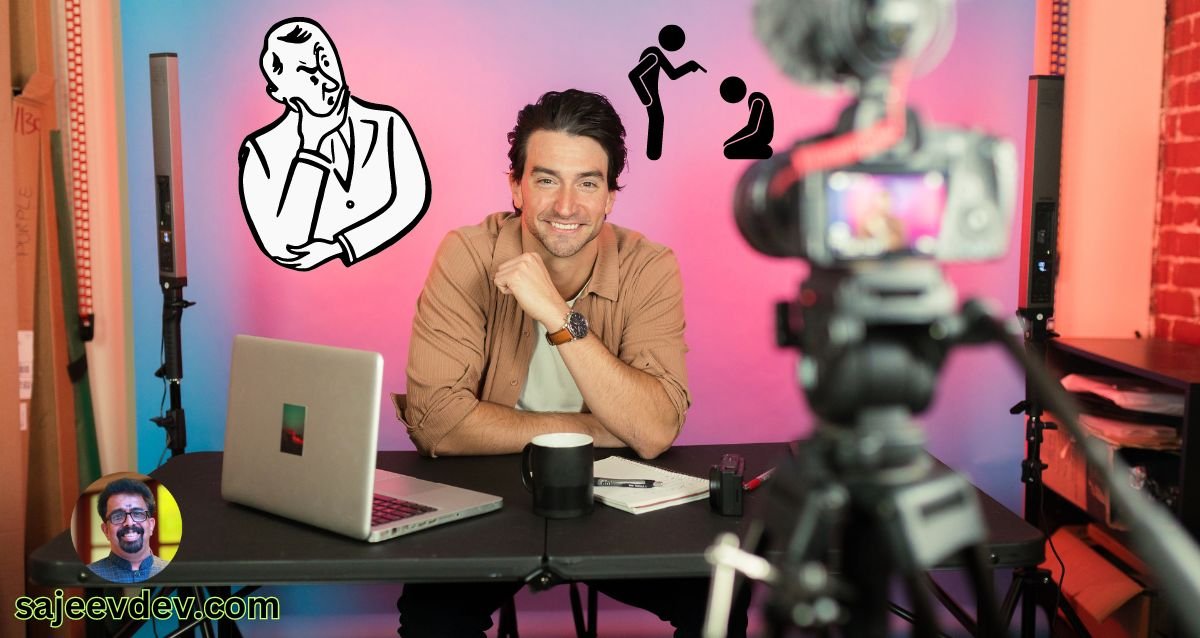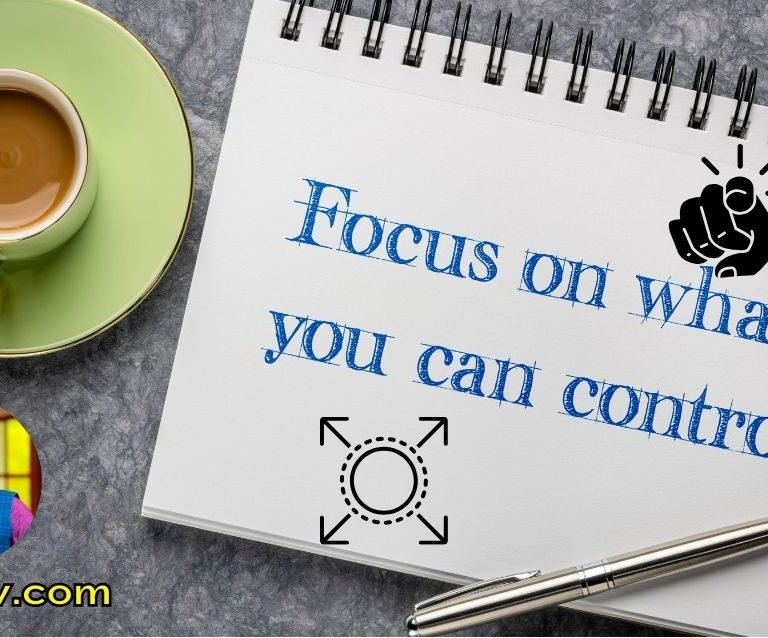The Power of Creation
In today’s fast-paced world, the prevalence of criticism can often overshadow the importance of creation. From social media platforms inundated with opinions to review sites that allow users to express their judgment with a mere click, the act of critiquing has become a dominant form of engagement. This culture fosters a mindset where individuals feel empowered to scrutinize the efforts of others while neglecting their potential to contribute meaningfully. As such, we find ourselves in a landscape where the act of creation is frequently sidelined by the noise of critique.
The rise of social media has accentuated this phenomenon, providing a microphone for voices that may not otherwise be heard. While this has democratized the sharing of opinions, it has also led to a scenario where negativity flourishes. Criticism, in its many forms, can discourage innovation and discourage individuals from taking risks in their creative pursuits. The constant evaluation of others’ works might breed a sense of insecurity, preventing potential creators from expressing themselves fully. This dynamic highlights a critical question: what does it truly mean to contribute to society?
Being a creator requires a proactive mindset, one that fuels innovation and growth. Instead of merely commenting on the successes and failures of others, adopting a creative approach enables individuals to channel their energy into producing something valuable. Creation brings forth new ideas, offers solutions to existing problems, and inspires others. By shifting focus from critique to creation, we empower ourselves and those around us to foster a more supportive and inventive community. As we explore the theme of creativity throughout this discussion, readers are encouraged to consider how they can transform their judgment into actions that contribute positively to the world around them.
Understanding the Critic’s Perspective
The inclination to adopt a critic’s role is an increasingly prevalent phenomenon in contemporary society. Several psychological triggers underpin this behavior, leading individuals to focus on criticism instead of embracing creativity. One fundamental factor is the fear of failure, which many experience when faced with the prospect of creation. Attempting something new inherently involves risks, and for some, it is far easier to critique others’ efforts than to risk exposing oneself to potential failure. This avoidance mechanism may provide a false sense of security.
Jealousy also plays a significant role in fostering critical attitudes. When individuals perceive others as more talented, successful, or innovative, they may resort to criticism as a coping mechanism to alleviate their own insecurities. This reaction allows them to project their frustrations outward rather than confronting their feelings of inadequacy. In a way, criticism becomes a form of self-justification, an attempt to elevate one’s own status by diminishing that of others.
Moreover, societal norms often endorse criticism over creation. In various contexts—be it art, politics, or business—critics frequently garner attention and validation for their opinions. This dynamic cultivates a culture where being critical is not only acceptable but often celebrated. Platforms such as social media magnify this effect, amplifying voices that point out flaws while frequently overlooking the creative professionals who take risks to innovate. Consequently, individuals may find themselves rewarded for adopting a critical stance rather than for expressing originality and creativity.
By understanding these motivations, we can begin to unravel the layers of criticism that pervade our culture and explore the potential for transforming this judgmental mindset into a more innovative and constructive approach to creativity.
The Courage to Create
Courage is a fundamental aspect of the creative process, serving as a catalyst that drives individuals to explore their ideas and bring them to fruition. The act of creating something from scratch is inherently risky; it involves exposing oneself to potential failure, criticism, and rejection. In contrast, the role of a critic often offers a sense of security, as it allows individuals to remain within the confines of established norms and pre-existing frameworks. This safety, however, can stifle innovation and limit personal growth.
Real-life examples illustrate that many prominent creators have faced significant obstacles but persevered in their quest for innovation. For instance, J.K. Rowling, the author of the Harry Potter series, experienced numerous rejections from publishers before finally finding one willing to publish her work. Her journey exemplifies the courage required to remain steadfast in one’s vision, despite adversity. Similarly, Thomas Edison, who famously failed thousands of times before successfully inventing the light bulb, embodies the resilience necessary in the face of repeated setbacks. These examples serve as reminders that innovation often stems from the willingness to take risks and embrace vulnerability.
Moreover, the courage to create not only pertains to individual projects but also extends to the capacity to share one’s work with the world. This act of vulnerability can be daunting, as putting original work into public view invites potential scrutiny. However, by embracing this fear and committing to the creative process, individuals can foster a culture of innovation that encourages others to step away from mere criticism and engage in their own creative endeavors. Ultimately, it is the courage to create that paves the way for transformative ideas and cultural shifts, highlighting the importance of prioritizing creation over judgment.
Bridging the Gap Between Criticism and Creation
Transitioning from a critic to a creator is an essential process for personal and professional growth. Many individuals find themselves entrenched in a cycle of negative evaluation, often spending significant time analyzing flaws rather than seeking solutions. To break free from this mindset, it is crucial to adopt a growth mindset, which emphasizes the potential for development through challenges and learning. By doing so, individuals can transform their critical thoughts into constructive actions.
One of the most effective actionable steps toward this transition is to reflect on the source of criticism. Instead of directing the critiqued perspective outward, individuals should channel this energy inwards. Ask yourself, “What can I learn from this situation?” By identifying areas for improvement within your own practices or skills, you can turn criticism into motivation for growth. This mental shift allows for the formulation of actionable pathways that lead to innovation.
Moreover, creating opportunities for collaboration can significantly enhance the creative output when moving away from criticism. Engaging with peers or mentors who adopt a similar goal promotes a supportive environment, where ideas can flourish without fear of judgment. This community can serve as a sounding board for new concepts, encouraging individuals to share their creative endeavors rather than harboring critical thoughts internally. Collective brainstorming and open dialogue foster an atmosphere conducive to innovation.
Lastly, setting tangible goals can help individuals focus their energy towards creative pursuits. Establishing specific, measurable targets related to projects or skills encourages a proactive approach instead of a reactive one. Celebrate small victories along the way to reinforce the positive aspects of this creative journey. When individuals recognize accomplishments, however minor, it empowers them to keep moving forward, driving the transformation from criticism into creation. By embracing these strategies, one can effectively bridge the gap and foster a more innovative mindset.
The Importance of Action: How Small Steps Lead to Innovation
Taking action is a pivotal element in the creative process that ultimately paves the way for innovation. Many renowned innovators, such as Thomas Edison and Steve Jobs, began their journeys from humble beginnings, often experimenting with basic ideas that eventually evolved into groundbreaking contributions. This highlights that every creator was once a novice, and their prowess developed over time through persistent effort and experimentation.
Small steps are vital; they can catalyze significant change. For instance, consider the story of J.K. Rowling, who faced numerous rejections before “Harry Potter” became a global phenomenon. Her commitment to consistently writing, despite setbacks, exemplifies how taking small actions, such as completing a chapter or refining a character, eventually led to a monumental success. It underscores the notion that creativity is not an instantaneous occurrence but rather a cumulative outcome of incremental efforts.
The process of innovation often begins with a simple idea or observation that triggers a desire for change. When creators act on these sparks of inspiration, they can transform seemingly minor thoughts into substantial innovations. For example, the early days of Microsoft involved Bill Gates and Paul Allen writing code in a small apartment, demonstrating that significant advancements can stem from modest origins. This actionable approach fosters resilience, encouraging individuals to learn from failures and adapt their strategies as they progress.
Moreover, taking action cultivates a mindset geared towards exploration and experimentation. As individuals engage in their creative pursuits, they frequently uncover new perspectives and insights, which can lead to unexpected innovations. By encouraging creators to focus on immediate, achievable tasks, they build confidence and a deeper understanding of their craft, paving the way for more significant breakthroughs in the future.
Building a Supportive Community of Creators
Creating a vibrant community of like-minded individuals can significantly enhance the creative process. Surrounding oneself with fellow creators not only fosters innovation but also encourages risk-taking, which is vital in bringing new ideas to fruition. When individuals come together, sharing their thoughts and feedback, they cultivate an environment that thrives on collaboration and mutual support. This creative synergy can lead to breakthroughs that might not have been achieved in isolation.
To find or join a supportive community, one might consider exploring both online and offline avenues. Social media platforms, such as Facebook, Instagram, and Discord, offer numerous groups dedicated to specific creative fields. These online communities facilitate discussions, idea exchanges, and collective brainstorming, helping members inspire each other. Participating in forums or platforms like Reddit can also help individuals connect with others who share their passion, leading to fruitful collaborations.
Conversely, offline opportunities abound as well. Local workshops, art classes, and meetups are excellent ways to engage with fellow creators in a more personal setting. Attending conventions or exhibitions not only allows for networking but also exposes members to diverse perspectives that can enrich their creative journey. Establishing relationships within these contexts can lead to friendships and partnerships, promoting a culture of shared growth and invention.
Collaborative creativity harnesses the strengths and ideas of multiple individuals, often resulting in innovative outcomes. When community members support each other, they build confidence and encourage each other to take risks that may lead to personal or collective breakthroughs. The power of sharing ideas amplifies creativity and can transform individual visions into extraordinary projects. Therefore, actively seeking and engaging with a community of creators is a proactive step towards personal and professional development in any creative endeavor.
Learning from Criticism: A Creator’s Framework
In the journey of a creator, the path to innovation is often paved with feedback, both positive and negative. Understanding how to navigate this landscape of criticism is essential for growth and improvement. Creators must cultivate the ability to differentiate between destructive and constructive criticism. Destructive criticism often stems from personal bias and aims to undermine one’s confidence, while constructive criticism is intended to be helpful, offering insights that enable creators to enhance their work.
A flexible mindset is paramount in this context. When receiving feedback, creators should adopt an open attitude, viewing criticism not as a personal affront but as an opportunity for development. It is vital to approach critiques with a willingness to learn, recognizing that even the most seasoned artists and innovators face scrutiny. By embracing a growth mindset, creators can filter valuable insights from the noise and utilize this knowledge to refine their projects.
Moreover, seeking out constructive criticism proactively can bolster a creator’s skill set and broaden their perspective. Engaging with trusted peers or mentors who provide thoughtful feedback can be immensely beneficial. This collaborative approach allows creators to view their work through different lenses, fostering a more rounded understanding of their craft. By doing so, they can transform feedback into actionable strategies that drive their artistic or innovative endeavors forward.
It is crucial for creators to remain resilient in the face of criticism. While it is natural to feel discouraged at times, maintaining focus on one’s vision can help in overcoming negative feedback. By framing criticism as a stepping stone rather than a stumbling block, creatives can harness it as a powerful tool for their ongoing journey of innovation.
Success Stories: Creators Who Changed the Narrative
Throughout history, numerous creators have risen from the ashes of criticism to reshape their industries and inspire countless individuals. These visionaries often started with a critical view of existing norms, using their insights as the foundation for innovation. One notable example is Steve Jobs, co-founder of Apple Inc. Job’s journey illustrates how he transformed his critical perspective on technology and design into revolutionary products. Initially dismissed by peers for his unorthodox ideas, Jobs persevered, leading to the creation of the Macintosh, iPod, and iPhone. His bold innovation paved the way for a new era of technology that has significantly influenced the way we interact with the world.
In the realm of literature, J.K. Rowling faced significant criticism and rejection before the publication of her iconic series, Harry Potter. Rowling’s personal challenges and the initial skepticism surrounding her work did not deter her; instead, they fueled her determination to create. The success of her narrative not only captivated a generation of readers but also inspired them to embrace their creativity. Her ability to turn criticism into a compelling story serves as a testament to the power of resilience and innovation.
Furthermore, in the field of sustainable fashion, Stella McCartney emerged as a pioneer by challenging the detrimental practices prevalent in the industry. Despite skepticism about her eco-friendly designs, McCartney remained steadfast in her commitment to sustainability. By focusing on ethical production methods and innovative materials, she has influenced the broader fashion narrative, encouraging others to follow suit and adopt more responsible practices.
These creators highlight the transformative power of shifting from a critical stance to one of innovation. Their willingness to confront challenges and dissenting opinions ultimately enabled them to produce groundbreaking work that not only defied expectations but also changed the narrative within their respective fields. Through their stories, it is evident that embracing a creator mindset can lead to significant advancements and inspiration for future generations.
Your Invitation to Create
As we draw this discussion to a close, it is essential to reflect on the roles we embody in our daily lives—are we primarily critics, or do we take on the mantle of creators? The world is abundant with opportunities for innovation and creativity, yet it is all too easy to fall into the habit of judgment. Critiquing can sometimes provide a sense of power; however, true fulfillment arises from the act of creation. By shifting our focus from what is lacking or flawed to what can be built or improved, we engage in a significant transformation of our mindset.
Imagine a world where every individual channels their insights and ideas into productive actions rather than mere commentary. Each of us possesses unique talents and perspectives that can contribute to positive change. Rather than simply pointing out obstacles, seek solutions. Instead of lamenting over shortcomings, invest your energy in cultivating new ideas. This shift from judgment to innovation not only enhances our communities but also enriches our personal growth.
Every creative endeavor, no matter how small, has the potential to spark meaningful change. Whether you express yourself through art, literature, technology, or social initiatives, what you create matters. In embracing creativity, we invite collaboration and foster environments where diverse thoughts can flourish. Therefore, I urge you to evaluate your relationship with criticism. Are you contributing to a culture of negativity, or are you actively participating as a builder of new realities?
We have the choice to step beyond the confines of criticism and embark on a journey of creation. Embrace your role as a creator—challenge yourself to act, to innovate, and to become an agent of positive change in the world. Let us all strive to be creators, focusing on what we can build together rather than what we can tear down.









